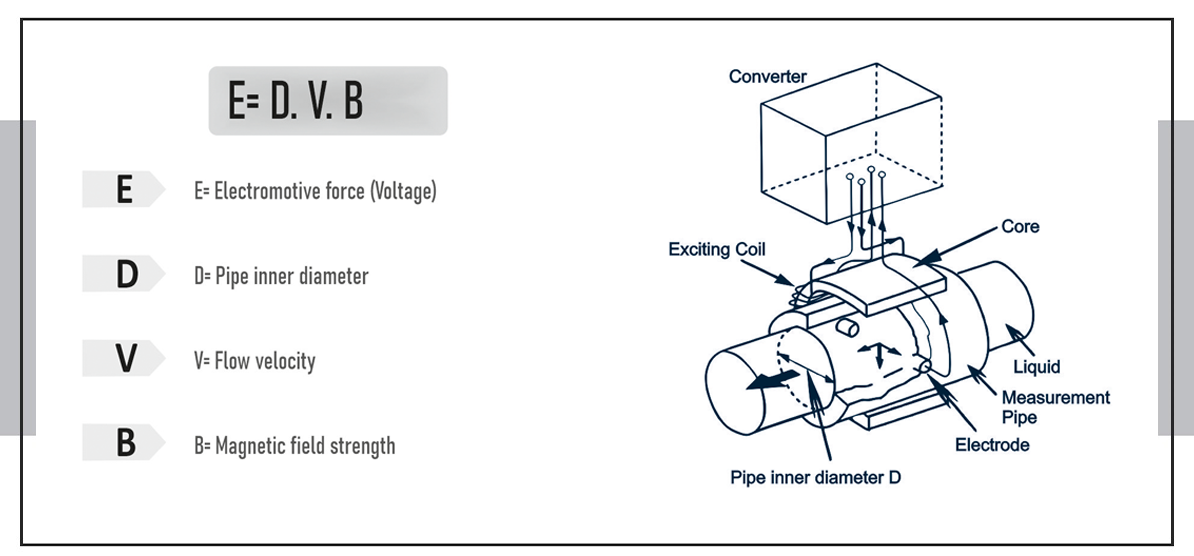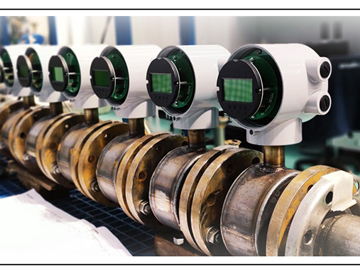

How does it work.? Electromagnetic Flowmeter
Electromagnetic Flow measurement; It is a flow measurement method based on the electromagnetic field principle. The physical foundations of this Principle are based on British Physicist Michael FARADAY, who discovered in 1831 that electric current can be produced with the help of a magnetic field. In 1941, Swiss Inventor Bonaventura Thurlemann applied this knowledge to conductive liquids passing through pipes and produced the world's first electromagnetic flowmeter. There are 2 coils inside each electromagnetic flowmeter. With the help of metal parts placed on these coils, it creates a continuous magnetic field across the cross-sectional area of the measuring tube. The 2 electrodes that sense the voltage are placed inside the measuring tube perpendicular to each other. The insulating material coated on the inner surface prevents the formation of short circuits between the conductive liquid and the metal measuring tube. In the absence of flow, no electrical tension occurs between the 2 electrodes. Negatively and positively charged ions in the conductive liquid are in equal amounts in the liquid. With the initiation of flow, the magnetic field exerts a force on the charged ion particles in the liquid. As a result, the negatively and positively charged ions in the liquid separate from each other and head to opposite sides of the measuring tube. This results in an electrical voltage sensed by the electrodes. This voltage is directly proportional to the flow rate in the line. Instant flow can be calculated with the known volume and velocity information of the measuring tube. As the flow rate increases, the separation of the charged particles will increase and the voltage between the electrodes will also increase. The measuring electrodes can also detect magnetic noise in the environment from time to time, this noise signal must be strictly distinguished from the actual measuring signal. To achieve this, the magnetic field must be created with pulsed direct current. By constantly changing the places of the charged ions between the electrodes with a direct pulsed current, the effect of magnetic noise is eliminated and precise and stable flow measurement is made. In the simplest way, the Electromagnetic Measurement principle and the Flow rate information are calculated with the above simplified formula. In order to provide satisfactory sensitivity, the following conditions must be met; 1) The tested liquid must have electrical conductivity. 2) The pipe must be full. 3) The components in the liquid must be homogeneously mixed. 4) If the liquid induces magnetically, the magnetic field of the device will change and therefore the device needs to be adjusted again.
Benzer İçerik
OUR DIGITAL CATALOG



